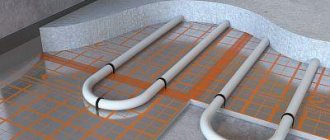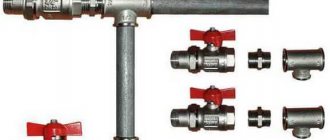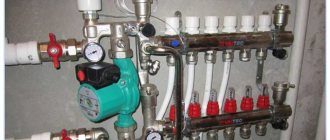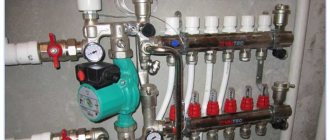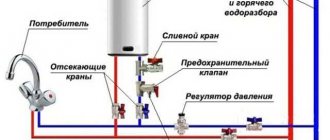Home gas line pressure
The nominal gas pressure for a home gas pipeline should be in the range of up to 2 mPa ÷ 1000 (artificial gas) – up to 3 mPa ÷ 1000 (natural gas) – up to 4 mPa ÷ 1000 (liquefied gas). Main gas pipelines can have a pressure of 0.1-0.6 MP. The gas pressure is reduced before it is supplied to the internal gas pipeline of the house using a house gas control point (DRP).
The DRP is mounted on the wall of the house in a cabinet or on the site in a cabinet raised on a fireproof platform, with a separate grounding.
Obtaining Technical Specifications for connection to the gas distribution network
Specifications can be obtained from a specialized organization. According to clause 6, the Applicant, who does not have information about the organization issuing the technical specifications, applies to the local government body with a request about the organization issuing the technical specifications.
Deadline for providing technical specifications: 14 days from the date of receipt of the application with attachments.
A request for technical specifications must contain:
- last name, first name, patronymic, place of residence and postal address;
- the planned date of commissioning of the capital construction project (if relevant information is available);
- the planned value of the maximum hourly gas (power) consumption separately for various connection points (if there are several of them) with justification for the need to connect several points. If the applicant does not have information about the planned value of the maximum hourly gas consumption, this information is clarified with the participation of the contractor’s employees when submitting a request for technical specifications or when forming it without charging a fee for a maximum hourly gas consumption of no more than 5 cubic meters. meters and for a fee with a maximum hourly gas consumption of more than 5 cubic meters. meters.
Calculation of the planned maximum hourly gas consumption can be performed by the contractor if the applicant sends a written request for calculation
- full and abbreviated (if available) names of the applicant, its legal form, location, postal address (for a legal entity) or last name, first name, patronymic, place of residence, postal address (for an individual (individual entrepreneur);
- directions of gas use, as well as characteristics of its use - the proposed heated area, the composition of gas-using equipment, other characteristics of gas use (determined by the applicant if necessary).
The following documents are attached to the request for technical specifications:
- a copy of the certificate of state registration of the right to the land plot on which the capital construction facility belonging to the applicant is located (hereinafter referred to as the land plot);
- situational plan for the location of a land plot with reference to the territory of a populated area;
- calculation of the planned maximum hourly gas consumption (not required if the planned maximum hourly gas consumption is no more than 5 cubic meters);
It is better to immediately contact the organization issuing the technical specifications so that they can provide an application form for issuing the technical specifications.
How to connect gas pipes
Preferably a welded connection of pipes for gas. Connection points for gas fittings can be connected with flanges and threads. The threads are sealed with flax, which is coated with red lead paint or lead white paint. A more modern seal is FUM tape (fluoroplastic sealing material).
When laying an internal gas pipeline, you will have to bend it. Bend radii are standard. When installing pipes up to Ø4 cm, the bending radius must be at least 2.5 times the pipe diameter. For pipes 4-5 cm, the bending radius is at least 3 times the diameter. Pipes of other diameters do not bend in the gas pipeline.
Flange connection of gas pipeline pipes
You can see the flange connection of the pipes in the photo. This connection requires gaskets. They are made from paronite. A flange connection is unlikely to be needed in the internal gas pipeline of a house, although it is possible in a DRP.
Connecting gas pipes by welding
The main connection of gas pipes in the house is welding. Any welding can be used:
- Electric arc welding by hand (electrodes No. 42, 42A, 46, 46A, 50A).
- Automatic welding with fluxes and wire Sv-08-A, Sv-08-GA.
The same wire is used in gas welding. In the internal gas pipeline of the house, you need to use fittings (valves, valves, taps) only designed for operation in a gas environment.
Preparation for installation work
Before installing the systems, you need to complete the following preparatory work:
- Make passage holes for pipes (walls, floors, foundations) for laying gas pipeline pipes;
- If you plan to hide a gas pipeline, you need to prepare grooves for it;
- The floors where gas equipment will be placed must be ready;
- When installing equipment on the wall, the walls are plastered;
- Plumbing and equipment to which gas and hot water will be supplied must remain in place.
Why gasify housing?
Today, natural gas is the most convenient and, importantly, profitable type of fuel. Sooner or later, every owner of a private house will want to gasify their property. Of course, there is an alternative - electricity. However, its cost is too high and it is very expensive to heat large areas in winter in this way. Plus, you will always depend on weather conditions - any hurricane can cause a break in the cables and then you will have to be left for some time without food, hot water and heating. But damaging a gas line is much more difficult.
Photo of natural gas
There is, of course, another “grandmother’s” way to heat your home - a stove or fireplace. But ash, coal, firewood, all this will lead to excess dirt. Lighting a stove takes a lot of time and labor, so it's best left as an option in case of an apocalypse. So, whatever one may say, blue fuel occupies a leading position today.
Installation rules
Gas pipes are connected by welding;
- Control, shutdown, and regulating devices are connected with threads or flanges. Distortions in connections are unacceptable;
- Pipe joints cannot be hidden in a groove or box;
- Connections require direct access;
- The pipes need to be painted;
- When closing the pipes with a box, gas. pipes to the box should be at least 10-11 cm;
- 10-15 cm should separate the weld from the passage through the wall and base of the house;
- For convenient installation and dismantling of taps, inlets, branches, you need to install squeegees with lock nuts;
- Usually, the distance from gas pipes to the walls of the house is indicated in the house gasification project. If this is not the case, a distance of at least the diameter of the gas pipe is taken.
WHY DO THEY CHOOSE US?
Our goal is a professional approach to each boiler room
TURNKEY INSTALLATION We value our time and yours. With us you can make a free calculation and selection of equipment, order installation and commissioning, and also enter into a maintenance agreement.
INDIVIDUAL APPROACH When choosing and installing a boiler, we take into account all the client’s needs and technical features of the house. Further operation depends on how competently the task is completed.
BENEFIT IN PRICE Our company is a dealer of heating equipment and we sell equipment without any extra markup. If you buy a boiler from us and order installation, we will provide you with an additional maximum discount!
THE RIGHT CHOICE There are quite a large number of companies that sell and install boilers, and only you can choose who to entrust this important task to! The main thing to know is that the presence of a license and permits indicate that the company takes its work seriously!
Laying a gas pipeline
Let's look at the permitted minimum distances from the gas pipeline to other communications.
- From the surface of the gas pipe to the open wiring there should be 25 cm when laying parallel and 10 cm when intersecting;
- For hidden wiring, these distances are reduced to 5 cm and 1 cm, respectively. The same rule applies to wiring in pipes;
- Distribution and input panels with gas pipes should not intersect;
- There must be a distance of at least 1000 mm to the “bare” electrical wiring busbars;
- Utilities (water, sewerage) intersect with the gas pipeline no closer than 2 cm. Parallel installation is selected locally and is not standardized.
Categories of gasified objects
According to Decree No. 1314 of the Russian Government, homeowners need to find out how much it currently costs to supply gas to their homes by contacting the regional gas distribution service.
First of all, household expenses for technological connection depend on the volume of gasification work. In this regard, three categories of capital objects have been defined.
The first category of objects . The first category consists of private households whose total natural gas consumption does not exceed 5 m³/h.
These include small business enterprises whose technological equipment consumes no more than 15 m³/h of a mixture of propane and butane. Those. The smallest fee for connecting to the gas distribution network is charged to cottages with an area of less than 300 m² and small enterprises from the public utility area.
The installation work on connecting the gas pipeline will be completed at the border of the site. Distribution of a gas pipe to a household's consuming equipment on its territory is carried out according to a separate project
The possible scope of work on laying connecting gas communications to a household of the first category is limited:
- the greatest distance from the main gas distributor to gas-consuming equipment is less than 200 m;
- gas pressure in the gas supply source is up to 0.3 MPa.
In addition, the laying of inlet gas pipelines is carried out without building reduction points (pressure reduction) for main natural gas.
The fee for connecting a gas pipeline for objects of the first category is 20,000-50,000 rubles (clause 8 of the appendix to the order of the Federal Tariff Service of the Russian Federation No. 101-e/3 dated April 28, 2014). The exact price is determined by the local gas distribution organization according to the conditions in the given territory, but cannot exceed 50,000 rubles.
The second category of objects . The objects of the second category include households whose connection requires gas distribution pipelines and/or the creation of main gas reduction points. Their estimated gas consumption is higher than the norm for first category facilities; a higher gas supply pressure is required (i.e. 0.6 MPa or more), etc.
Compliance with the cost of connection in the first category is observed if the pipeline is inserted into a low-pressure gas main. If gas reduction is needed, the connection price will exceed 50 thousand rubles.
In the private residential sector, properties falling into the second category usually have an area of over 300 m². For their gasification, standardized tariff rates are used, calculated according to the methodology developed by the Federal Tariff Service of the Russian Federation (appendix to order No. 101-e/3 of April 28, 2014).
It should be noted that applicants for natural or artificial gas consumption volumes of 300 m³/h and above are required to coordinate gas connections with a gas distribution facility that has a technological connection with the contractor’s gas pipeline.
The approval of tariff amounts for gas connections to households of the second category is carried out by the local executive authority of the Regional Energy Commission (i.e., the regional energy commission).
The third category of objects . Capital construction projects of the third category include farms that require an individual gasification project. For them, the amount is determined according to the design and estimate documentation, which has previously passed the examination.
The amount of gasification costs for households of the third category is established by the Regional Energy Commission, which relates to the location of the household connected to the main gas.
Prices for laying a gas pipeline along the section from the border entry point vary from company to company. However, it is worth considering the need for numerous approvals for a gas project. With an experienced performing company, full-fledged gasification will happen faster
The following conditions are considered to be characteristic features of applicants’ facilities in need of gasification:
- planned natural gas consumption from 500 m³/h;
- work on connecting to the gas main requires the pipeline to be routed through forested areas, through rocky soils, swamps and water obstacles;
- gas pipeline installation work requires passing through obstacles that force the use of horizontal directional drilling.
Those. According to Government Decree No. 1314, there are virtually no fixed prices for the technological connection of applicants to the gas network. The cost of gasification work depends on a number of conditions that determine its size within the framework of the relevant methods of the Federal Tariff Service of the Russian Federation.
Installation of gas consumers at home
- The gas water heater is installed 2 cm from a fireproof wall and 3 cm from a fire-resistant wall. The walls are insulated with a “sandwich” of 3 mm asbestos and roofing steel. The insulator must be 100 mm larger than the dimensions of the water heater on each side.
- A tiled wall does not require additional protection.
- The wood is plastered over a grid. Next, they are covered with asbestos or asbestos plywood, and covered with roofing steel.
- The wall where the stove stands is closed from the floor. The distance from the slab to the wall is taken to be 70 mm.
Delivery and acceptance of internal gas supply systems
- Hidden work is accepted during the installation process;
- The finished gas pipeline is tested by contractors together with the customer and the distribution network of the Oblgaz branch. The results are recorded in the construction passport or in a separate act.
- The gas pipeline is checked with air under pressure.
Water testing is prohibited.
- Checking for defects in connections is carried out with pressure: 100,000 Pa;
- Checking the density of connections by pressure: 4000 Pa with a meter and 5000 Pa without a meter.
- Tests are carried out with the devices turned on. The gas pipeline is in good condition for tight connections if the pressure in the pipes drops by no more than 200 Pa in 5 minutes.
Based on the tests, a report is drawn up. The act is signed by the installation organization and the district distribution network. According to this act, the acceptance committee consisting of: the customer, the installation organization, the Distribution Zone and Technical Supervision gives permission to start the gas. Gas is released into the house by the repair and maintenance service of the district, in the presence of the organization that did the installation. Next, the system is accepted into operation according to the act. Acceptance of the gas supply system for operation is formalized by an act.
©Obotoplenii.ru.
Other articles in the section Gasification at home
- Stages of gasification at home
- Brick chimney for gas boiler
- Installation of a gas boiler in a house: stage of gasification of a private house
- Requirements for a room with a gas boiler
- Obtaining technical specifications for gasification of a house
- Construction and installation of internal gas supply at home
- Installation of a chimney for a gas boiler
Popular articles
Heating wiring diagram for a country house using a gas boiler
The gas heating circuit in a private house can be single-pipe, two-pipe or radiant, using a collector. Each of the proposed options has its own advantages and disadvantages.
One and two-pipe circuit for supplying coolant to radiators
Single-pipe connection diagram (Leningrad) . The supply of hot and return of cold coolant is carried out through one pipe, to which all radiators are connected in series.
| Advantages | Flaws |
| Reducing the cost of purchasing pipes | Cannot be used to heat large areas, since the number of connected radiators is limited |
| Quick installation | The heating radiators in the system heat up unevenly - the first ones are very hot, the last ones are very weak |
| Minimum number of joints, which reduces the risk of leaks | To equalize the possibility of heating in rooms, additional sections are connected to the radiator batteries connected last, this completely eliminates the economic benefit |
| Disabling one or more heating radiators connected first will change the temperature regime of the remaining heating elements |
Two-pipe heating system . Hot coolant is supplied through one pipe from the gas boiler, and cooled water is returned through the other.
| Advantages | Flaws |
| All heating radiators receive coolant at the same temperature | Pipe footage doubles |
| Disabling radiators does not affect the temperature of the main system | Installation complexity increases slightly |
| The number of connected radiators is significantly greater than that of a single-pipe system and depends on the pipeline capacity |
In turn, a two-pipe heating scheme can be a dead end, when the coolant and return flow move in different directions or in a parallel way - the “Tichelman” scheme. The latter heats the radiators more evenly.
Types of two-pipe coolant supply
The next most important point is the method of circulation of coolant in the system.
Natural circulation . Characterized by low coolant pressure in the pipeline. The system must necessarily have an acceleration manifold. This is a container located at the top point of the heating system into which hot coolant is supplied. This method is used in vertical wiring. It's called gravitational circulation.
Forced circulation . The heating system is hermetically sealed, and the movement of the coolant is ensured by a special circulation pump embedded in the heating system. The pipe layout is horizontal, which significantly improves the aesthetic characteristics of the room.
To ensure natural fluctuations in coolant volumes due to thermal expansion of the liquid, a membrane expansion tank is provided in the safety system of the gas boiler.




